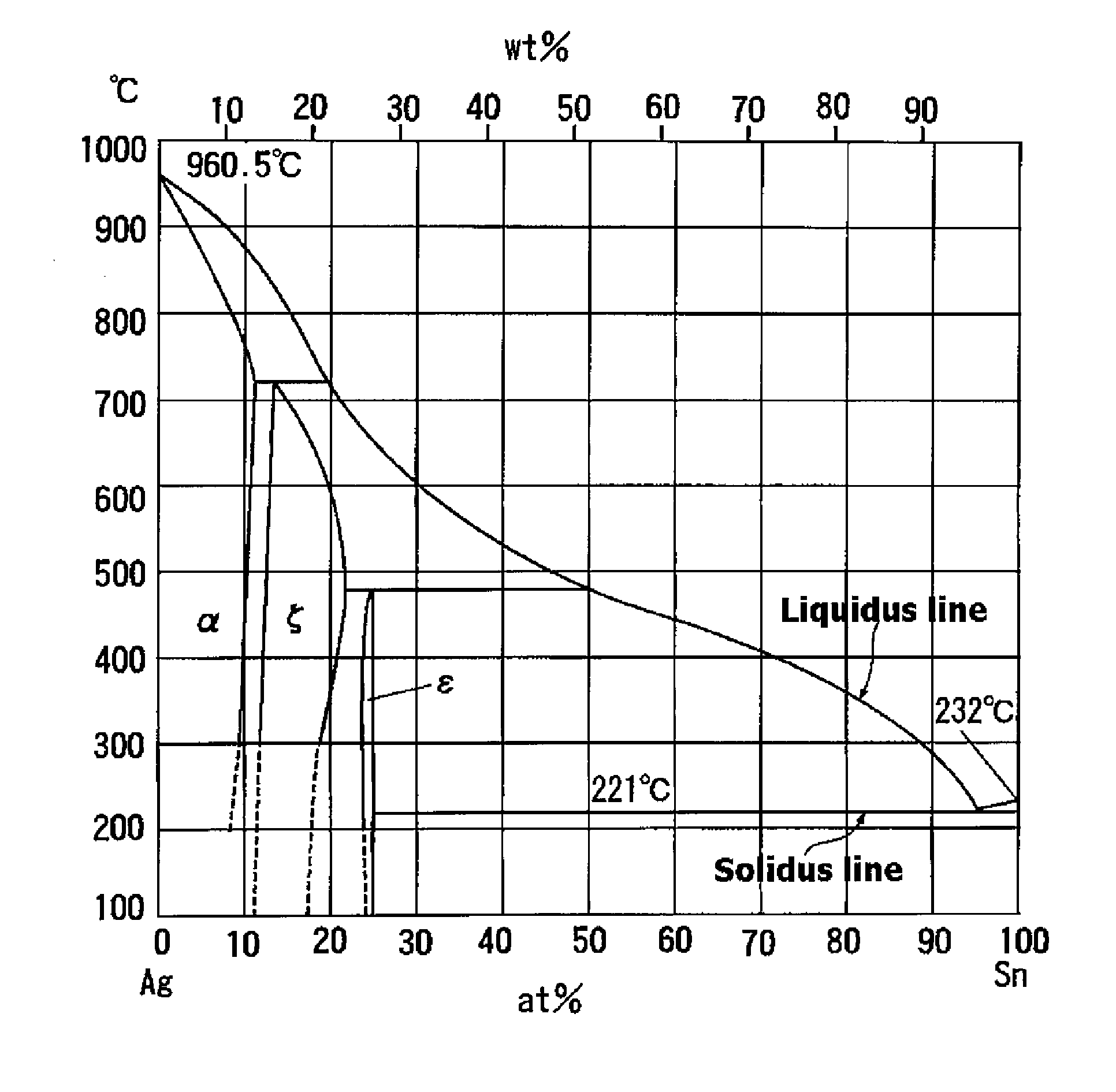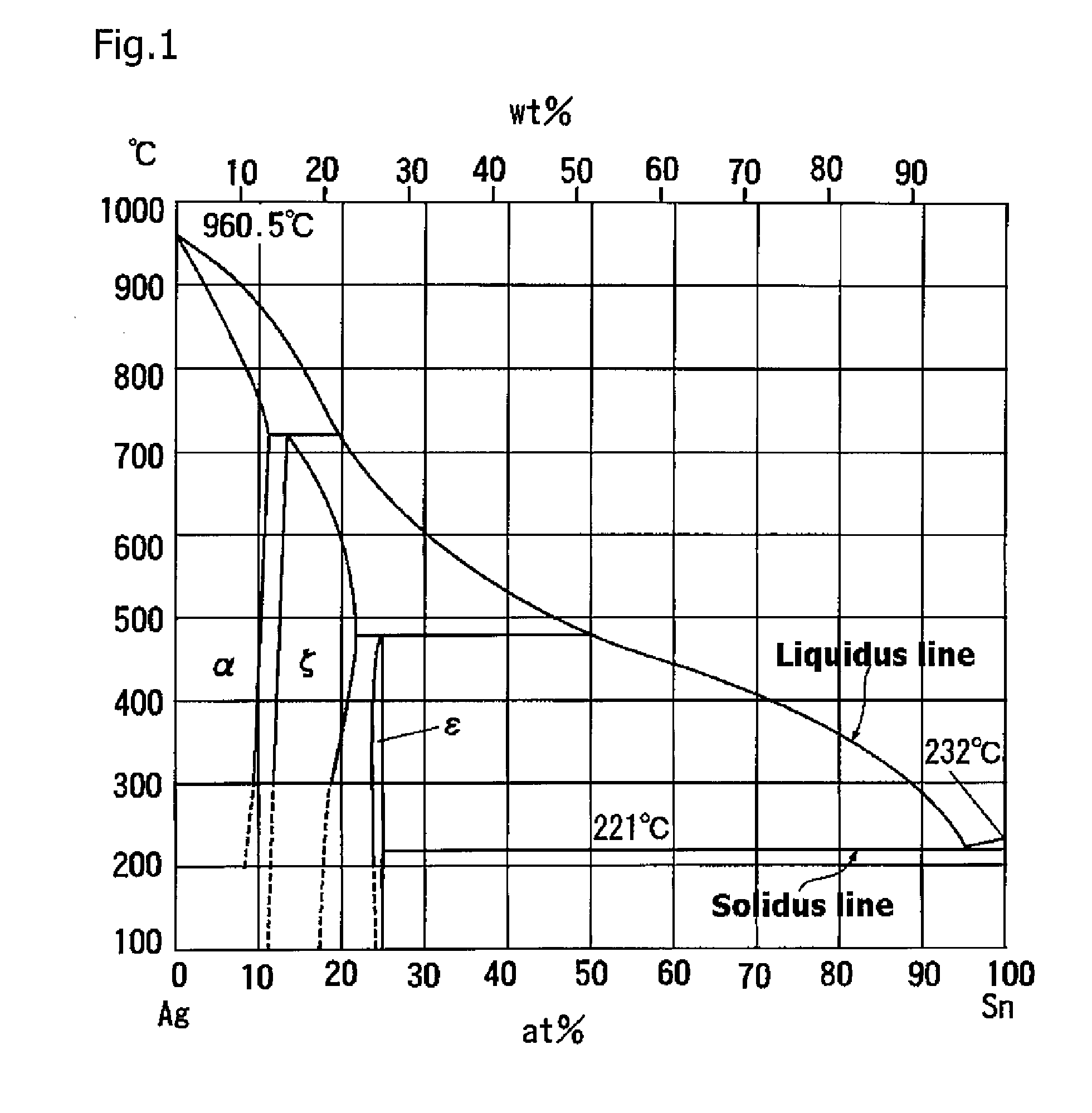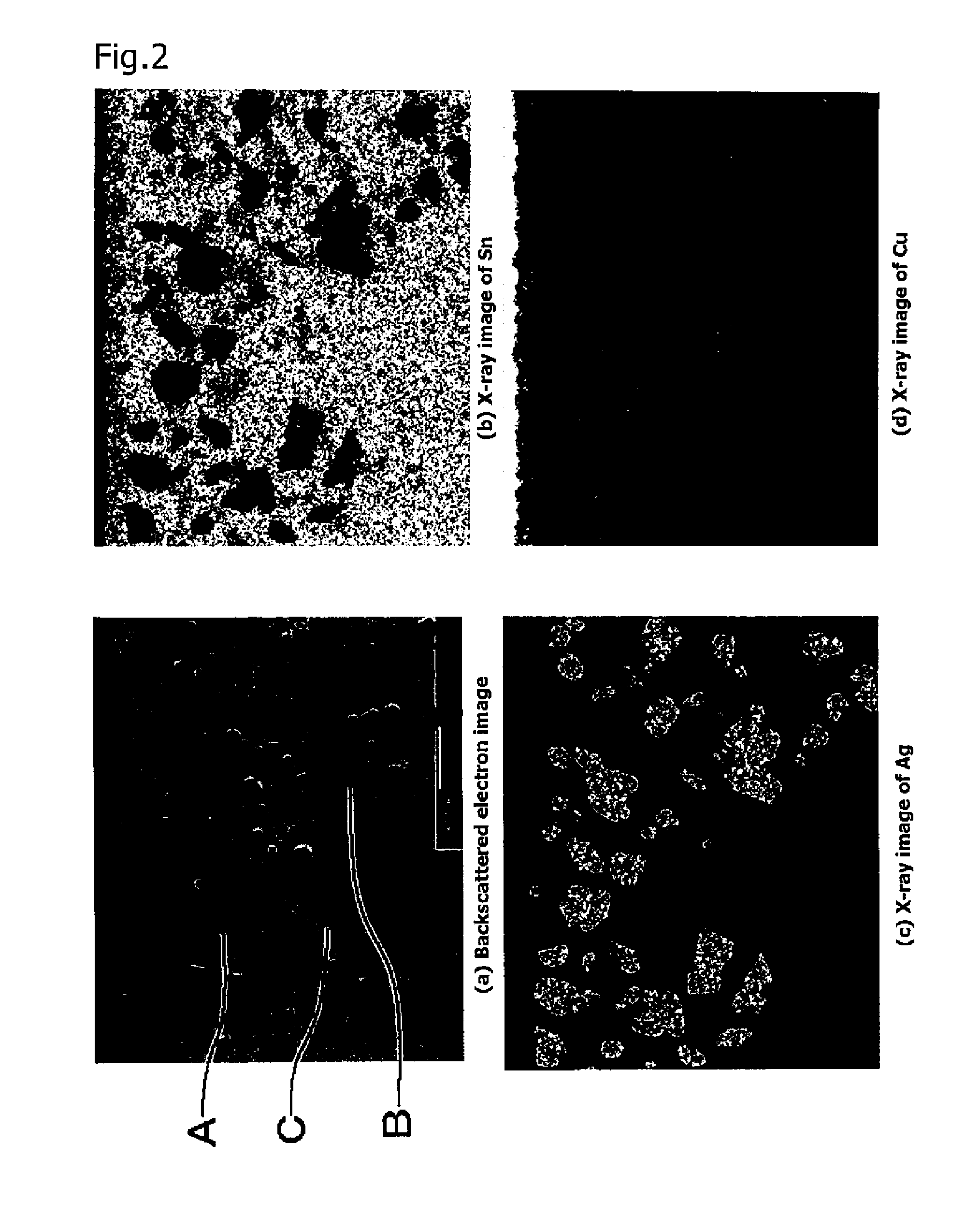Cream solder and method of soldering electronic part
a soldering electronic and cream technology, applied in the field of cream soldering and soldering electronic parts, can solve the problems of undetectable need for reducing atmosphere for organic materials, no practical solder materials that can be used widely, etc., and achieve good bonding properties and high strength and thermal stability
- Summary
- Abstract
- Description
- Claims
- Application Information
AI Technical Summary
Benefits of technology
Problems solved by technology
Method used
Image
Examples
Embodiment Construction
First Invention
[0047]Description will now be made of a specific form of the first invention with reference to the Sn—Ag phase diagram shown as FIG. 1. Specific examples of the solder cream according to the first invention, the results of their evaluation, etc. will be described later in the section of Examples.
[0048]The following description employs a simplified expression of a composition for convenience of explanation. For example, 3.5 wt % Ag is indicated as 3.5% Ag or Ag3.5%, or more simply as 3.5Ag.
[0049]Reference is first made to the Sn—Ag phase diagram in FIG. 1. In FIG. 1, the vertical axis shows temperatures, degree centigrade (° C.) and the horizontal axis shows the proportion of Sn in atomic % (at %) at bottom and in weight % (wt %) at top. In the phase diagram in FIG. 1, the liquidus line is a line showing the temperature at which a solid phase begins to crystallize from a complete liquid on congelation, or at which a solid turns into a complete liquid on heating. The so...
PUM
| Property | Measurement | Unit |
|---|---|---|
| melting point | aaaaa | aaaaa |
| temperature | aaaaa | aaaaa |
| melting point | aaaaa | aaaaa |
Abstract
Description
Claims
Application Information
 Login to View More
Login to View More - R&D
- Intellectual Property
- Life Sciences
- Materials
- Tech Scout
- Unparalleled Data Quality
- Higher Quality Content
- 60% Fewer Hallucinations
Browse by: Latest US Patents, China's latest patents, Technical Efficacy Thesaurus, Application Domain, Technology Topic, Popular Technical Reports.
© 2025 PatSnap. All rights reserved.Legal|Privacy policy|Modern Slavery Act Transparency Statement|Sitemap|About US| Contact US: help@patsnap.com



